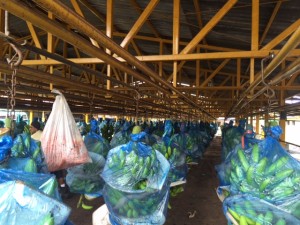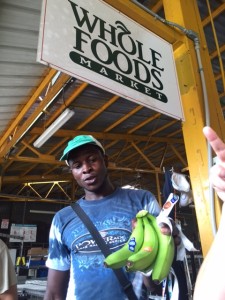Beethoven and I have something in common: our favorite fruit. Get it? Ba-na-nanaanaaaaa! On May 21, 2016 we traveled to Earth University, a non-profit international university dedicated to the sustainable development of the tropics through educations, research, and outreach. Six years ago, Whole Foods partnered with this organization to buy all of their top quality production bananas. I found this incredibly interesting to finally see first hand where all the bananas I have been ravenously consuming over the past several years were coming from.
Earth University grows all their bananas using environmentally friendly practices that are Rainforest Alliance Certified and grown carbon neutral. They also strive to offer fair wages and job safety to all their employees. This made me feel better about my excessive consumption. I also just really enjoyed learning the life cycle of my favorite and most consumed fruit. Here are some of the facts that I learned:
- Bananas are available year- round, they don’t have a growing season (woohoo!)
- The “bunches” are covered in blue plastics when they are ready to be picked. This is for a few reasons:
- The blue allows more UV rays to penetrate the plastic to provide a more suitable microclimate for the bananas to ripen more quickly
- Earth University are soaked in repellent made with garlic and hot peppers instead of the traditional pesticides
- Protection from insets, monkeys, and other pests
- Also provides protection from wind and other elements
- The blue allows more UV rays to penetrate the plastic to provide a more suitable microclimate for the bananas to ripen more quickly
- The harvesters will leave one banana growing off the bottom of the bunch. This allows all of the bananas to reach a uniformed size
- The banana plants (not trees) are planted in a series of 3. This helps them rejuvenate faster when one reaches maturation and is ready to be harvested
- A “bunch” of bananas can weigh up to 150 pounds. They are loaded up a “banana train” and moved to the processing plant.
- Bananas consume a lot of water to grow. Earth University has implemented a water filtration system that allows them to reuse 30% of the water.


